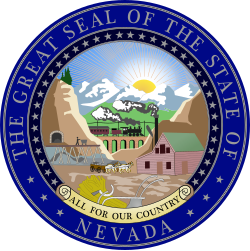| |||||||||||||||||
| |||||||||||||||||
 County results Bible: 50–60% 60–70% Young: 50–60% 60–70% | |||||||||||||||||
| |||||||||||||||||
| Elections in Nevada |
|---|
 |
The 1956 United States Senate election in Nevada was held on November 6, 1956. Incumbent Democratic U.S. Senator Alan Bible, who won a special election to complete the unexpired term of Pat McCarran, was re-elected to a full term in office over Republican U.S. Representative Cliff Young despite Republican nominee Dwight David Eisenhower winning the state in the concurrent presidential election in Nevada.

